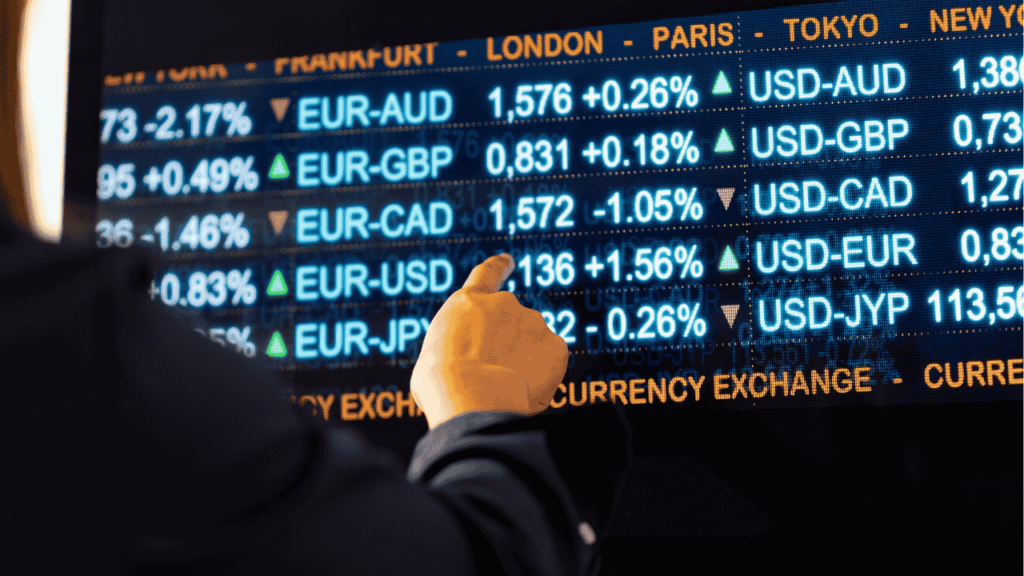In our guide to comparing exchange rates, I will explain how to get the best exchange rate when you convert one currency to another and then send it abroad. I’ve been in the industry for 20 years and have been both a currency broker and a customer sending money abroad. Here are my inside tips on how to compare exchange rates so you get better exchange rates.
One of the reasons foreign exchange transactions are so expensive is that people, unfortunately, don’t really understand how the pricing works. Because of this, banks have been overcharging people for sending and receiving money abroad for decades. If you use a currency broker for a large transaction instead of your bank it is possbile to save up to 4% on the transaction. But how do you know a currency broker is giving you the best exchange rate? Here we explain what to ask and what to watch out for.
How To Compare Currency Quotes
To compare exchange rates, you need to understand how they are calculated. That is because currency exchange rate quotes are indicative as the underlying exchange rate moves all the time. If a currency broker sends you a quote, it will be indicative and will have changed completely by the time your account is open.
Once you have requested quotes and chosen a currency broker, you need to ask them this very simple question:
“How far from the mid-market are your exchange rates?”
Anything more than 0.5% from the mid-market for a conversion between £50,000 and £250,000 is too expensive. Aim for under 0.3% for between £250,000 and £500,000 and 0.2% for over £500,000.
To clarify, the “mid-market” is the live currency rate between which the banks buy and sell.
You may have noticed that currency brokers do not publish this. That is because most currency brokers’ standard rates are can be higher than what is quoted in our comparison tables as we have worked out exclusive deals with some providers. Whilst standard exchange rates are still a significant discount from the banks who have historically charged around 3-5% for currency conversions who then add fees for international transfers, it is possible to get a much better rate.
So when you compare money transfer services, always go with a broker prepared to offer fixed and transparent exchange rates.
- If you have a large currency exchange coming up you should also read my guide to not getting ripped off by honeymoon exchange rates.
Understanding The FX Mark-up
Another way to have a better understanding when comparing currency broker exchange rates, is to know what a broker’s markup is.
You can find this out by asking these two simple questions:
-
How far is my price from the mid-market?
-
Is that rate fixed?
You will get an answer as a percentage, i.e. “Our rates are 0.5% from the mid-market.” What this means is that the broker’s fees are 0.5% of the transaction value. So if you are converting £100,000, it will cost you £500 in fees. You won’t see this on a statement because it will be built into the exchange rate, which the broker widens from the mid-market.
For example based on the currency GBPEUR exchange rate of 1.2050
- You would be selling 100,000.00 Pound Sterling (GBP).
- You would be buying 119,897.50 Euros (EUR).
- Your exchange rate 1.198975.
- Mid-market exchange rate 1.2050.
- The broker has charged you EUR 602.50 (£500).
There is a difference between the mark-up being fixed and the exchange rate being fixed.
Exchange rates can move around 1% in a day, so the exchange rate you are given is indicative. By the time you get round to opening an account and arranging the transfer, the price will have moved. But if the mark-up is fixed, you know that your exchange rate will always be a set percentage away from the mid-market price.
- Top Tool: Calculate FX Conversion Mark-Ups
Timing Large Currency Transfers
You should also consider the right time to do the actual transaction. Currency prices can move over 5% in a month, so if you are spending too much time on negotiating rates, the actual price may move against you, negating any saving you would have made by using a cheaper provider.
You can use a currency forward to entry stop loss to mitigate this. A currency forward will allow you to lock in an exchange rate for payment later. The benefit of this is that buying currency now won’t cost you any more in the future. The downside is that if the price moves in your favour, you will not benefit from the price reduction.
Using a stop-loss entry order gives you some opportunity to let the rate move in your favour, by allowing it to move against you a bit before doing the deal. However, it stops the price moving a lot against you, protecting most of your downside.
Expert Insider Tips On Comparing Exchange Rrates
Watch our video discussion, where we discuss how currency brokers make money and how to compare exchange rates effectively.

Richard is the founder of the Good Money Guide (formerly Good Broker Guide), one of the original investment comparison sites established in 2015. With a career spanning two decades as a broker, he brings extensive expertise and knowledge to the financial landscape.
Having worked as a broker at Investors Intelligence and a multi-asset derivatives broker at MF Global (Man Financial), Richard has acquired substantial experience in the industry. His career began as a private client stockbroker at Walker Crips and Phillip Securities (now King and Shaxson), following internships on the NYMEX oil trading floor in New York and London IPE in 2001 and 2000.
Richard’s contributions and expertise have been recognized by respected publications such as The Sunday Times, BusinessInsider, Yahoo Finance, BusinessNews.org.uk, Master Investor, Wealth Briefing, iNews, and The FT, among many others.
Under Richard’s leadership, the Good Money Guide has evolved into a valuable destination for comprehensive information and expert guidance, specialising in trading, investment, and currency exchange. His commitment to delivering high-quality insights has solidified the Good Money Guide’s standing as a well-respected resource for both customers and industry colleagues.
To contact Richard, please ask a question in our financial discussion forum.




